11 Rules of Choosing and Identifying Core in Loop Fingerprint Patterns
Examination of loop fingerprint patterns starts with identifying the core. In general, the core is considered the center point in a fingerprint pattern.
In any case, a fingerprint expert has to follow some sets of rules to assign an area in the fingerprint as the core. With this, I try to explain what are the 11 rules for choosing core in the loop fingerprint patterns.
Rule 1: Core is Placed on Innermost Recurve
The innermost ridges of recurve in loop fingerprint pattern should be chosen as the core. The core is also helpful in calculating ridge counting for loops.
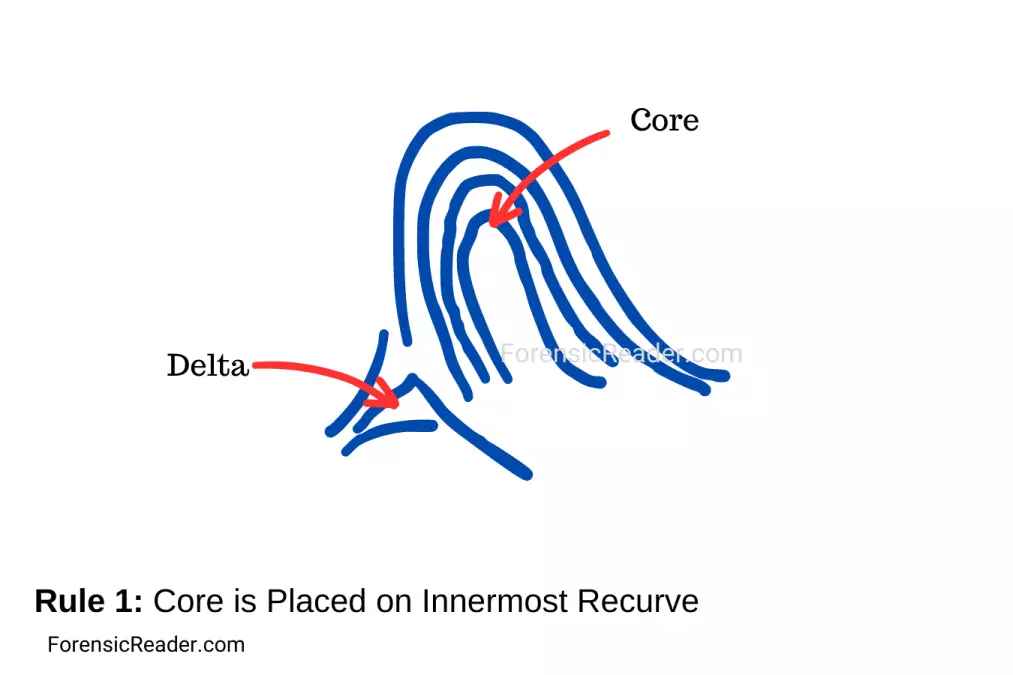
Rule 2: Core is Placed Inside the Shoulder of Recurve
The shoulder of a loop is the point at which they turn to join the straight line. For example, if you add a semi-circle to a line, the point of joining is a ‘shoulder’ point of the loop.
In other words, a shoulder of recurve is the point where the recurve begins or ends.
So, in any case, the core must be placed inside the shoulder. The following image shows the shoulder of the loop pattern.
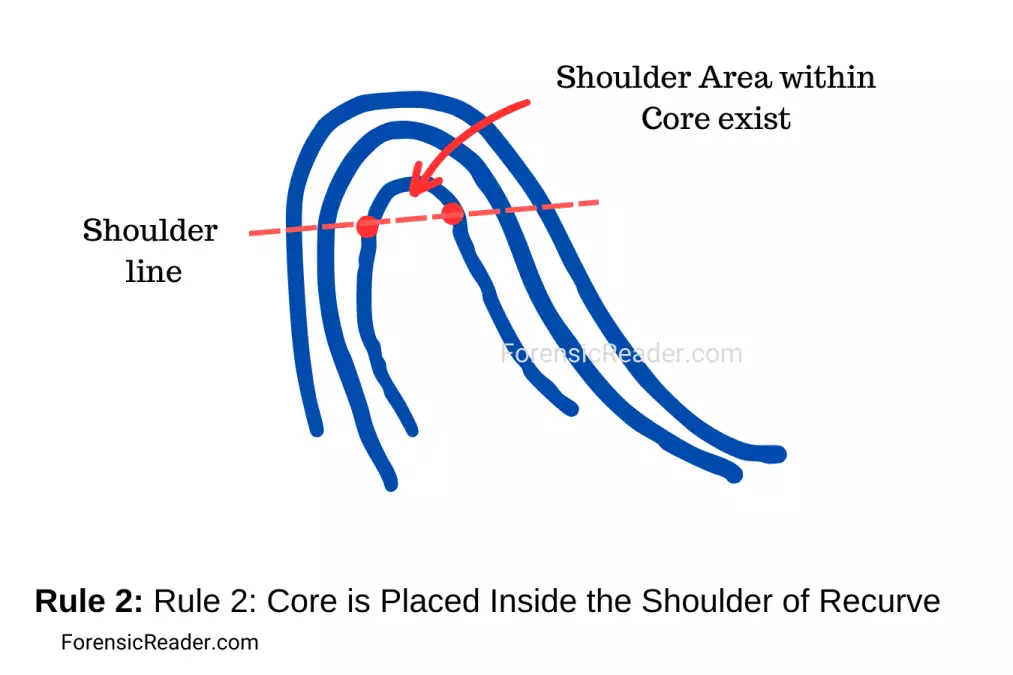
Rules 3: Core is Placed at the Center for Equidistant Shoulders
Draw an imaginary line between two shoulder points, if the line is equidistant to the delta, the core should be placed at center point of the recurve of the loop. The following images show a delta point that is equidistant from the delta.

Rule 4: Choosing Core in Non-Equidistant Shoulders from Deltas
If the shoulder area of the loop doesn’t contain any ending ridges (read rule 5), the core is placed farthest from the delta within the shoulder area of the loop. Images show how the core should be chosen in accordance with the delta.
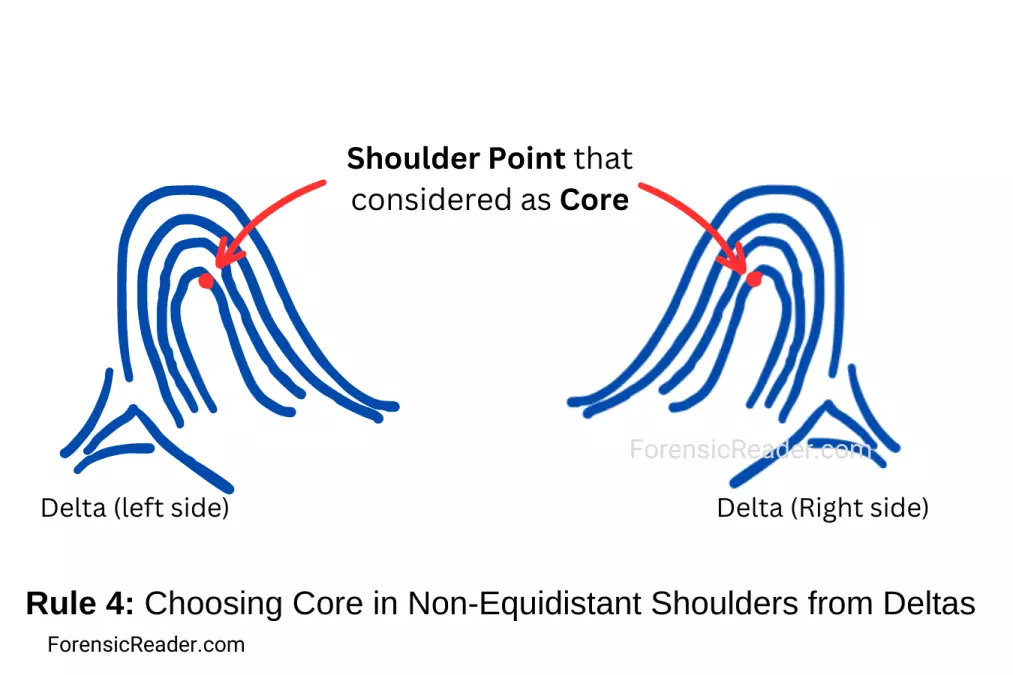
Rule 5: Single Ridge Within Recurve Shoulder
In the loop fingerprint pattern, if there is an ending ridge inside the shoulder of the innermost recurve, the core is placed at the top of that ridge.
Following image shows a ridge road ending inside the innermost recurve. So, the ending point toward the recurve is considered the core of the pattern.
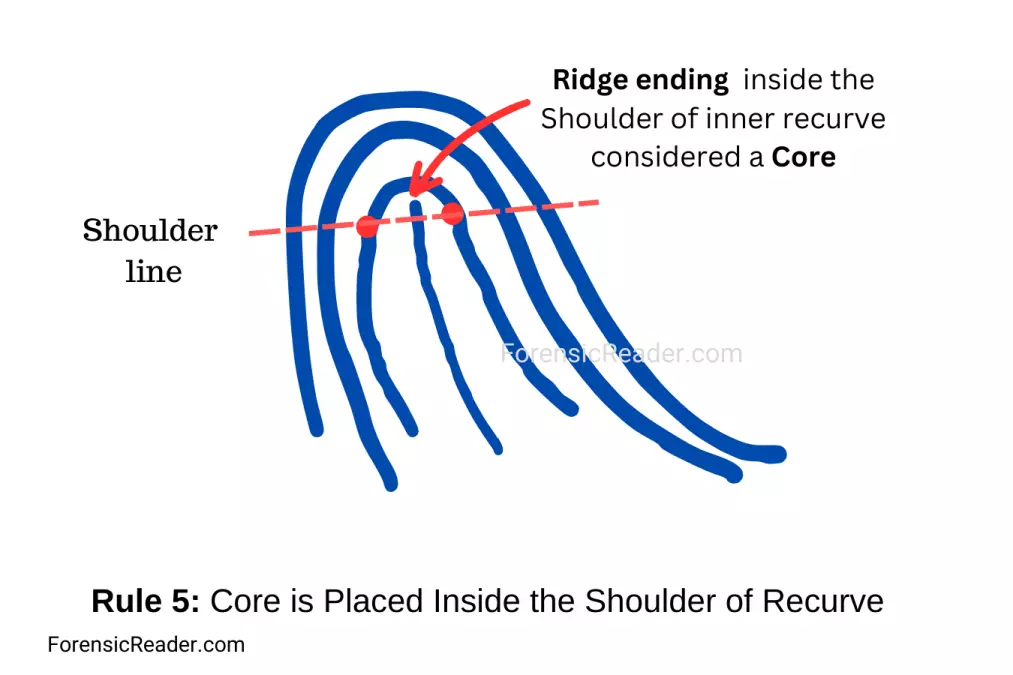
Rules 6: Two Ridge Endings Within Loop Shoulder
Now, let’s say, instead of one ridge road there are two ridges that rise above the shoulder of the loop. In that case, the farthest ridge from the delta is considered as the core.
Following image represents the common cases of choosing the core of two ridges ending inside the shoulder of the loop.
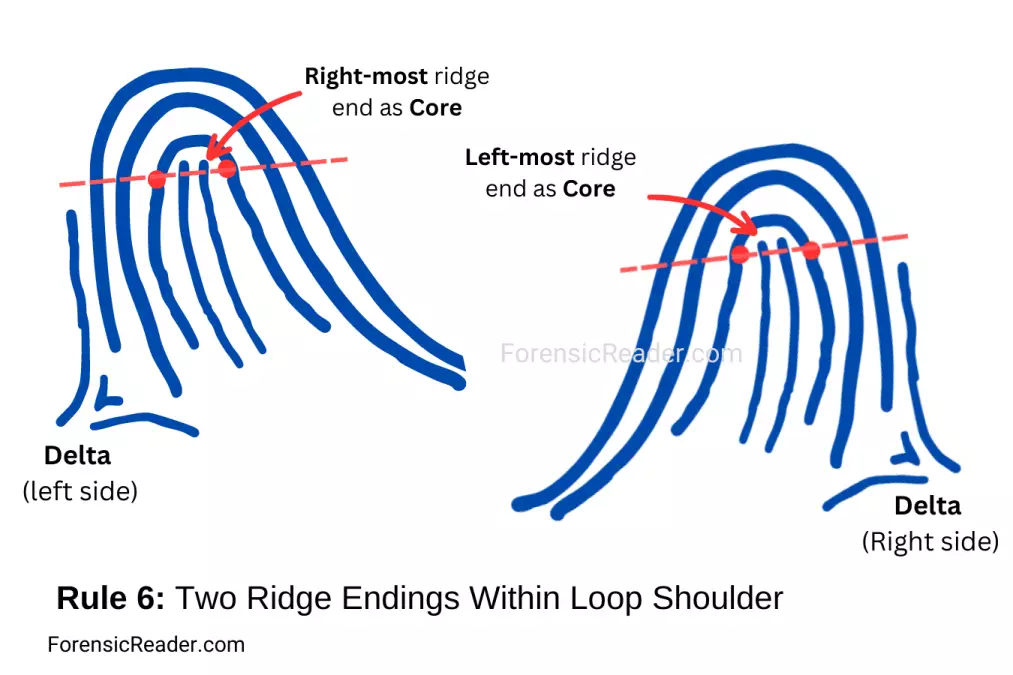
Rule 7: Three Ridge Endings Within Loop Shoulder Recurve
If a fingerprint pattern has a three ridge (or rod) within the shoulder of the loop, the center one is picked as the core of the fingerprint. This is also true for the odd number of ridges that terminate inside the recurve of the shoulder, or the point where the recurve begins.
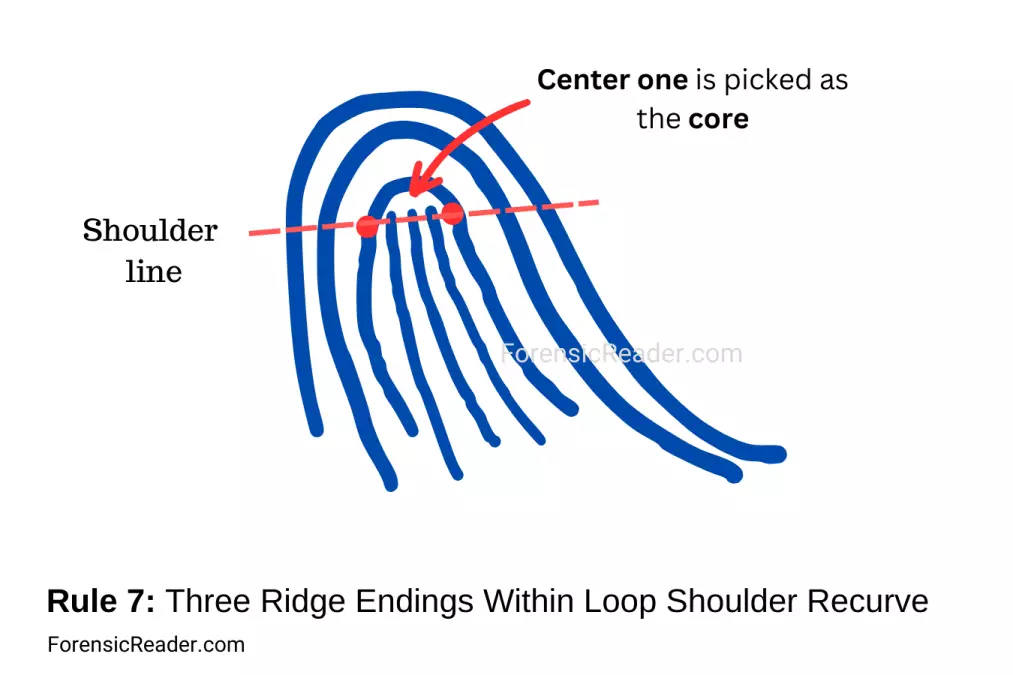
Rule 8: Even Numbered Ridges Ending Inside the Shoulder of Loop
Any even numbered ridges other than two, the center ridge pair is treated as the core. And of course, it should be inside the shoulder of the loop.
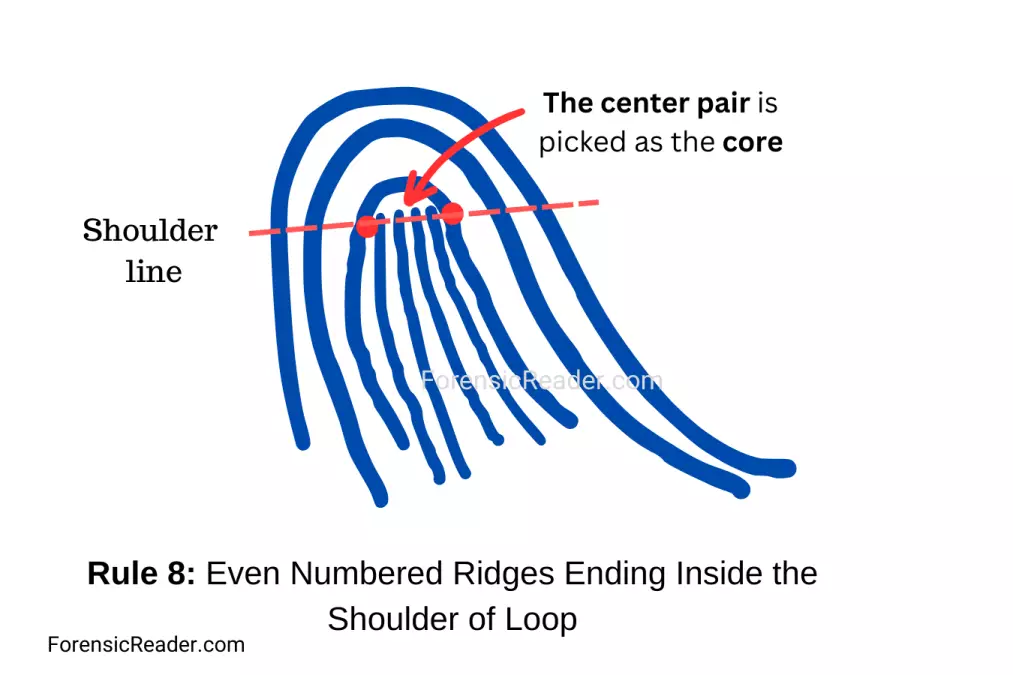
Rule 9: Inner Recurve Must have No Appendage Abutting
The inner loop must have a clean, smooth recurve, with no appended abutting (touched or lean on) right angles (90°) ridges between shoulders. If it does, that inner recurve is omitted to qualify as the core. This is usually called a spoil loop fingerprint pattern.
The very next loop outside that recurve is considered as the core and all the above rules are followed accordingly.
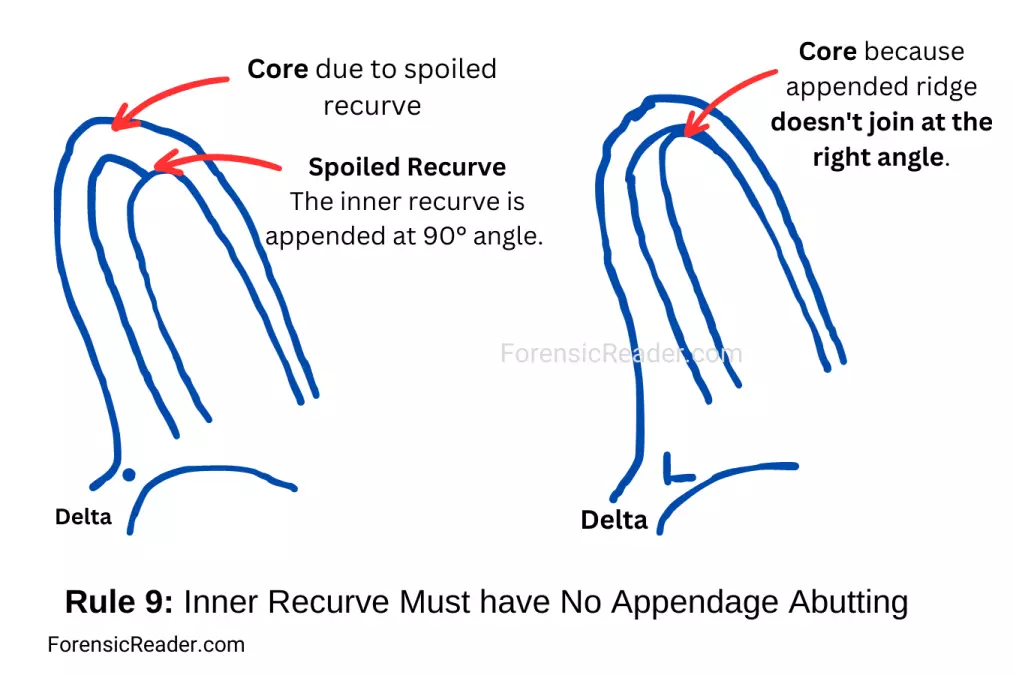
Rules 10: Choosing Core in Interlocking Loop Pattern
In case two loop patterns cross each other (which is extremely rare), their center point of meeting is considered the core.
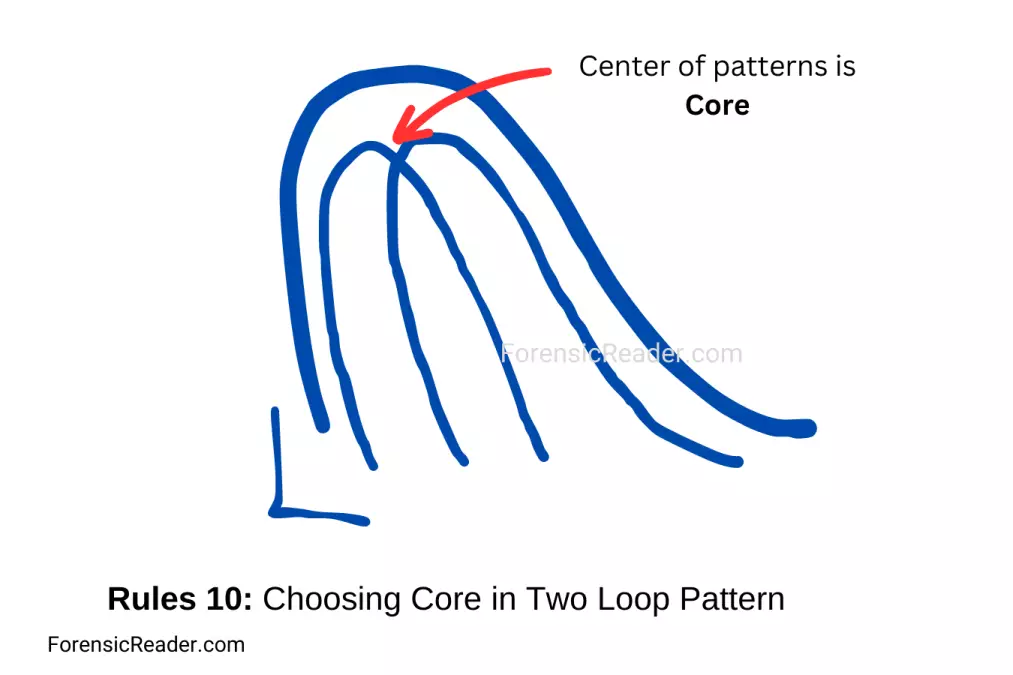
Rule 11: Recurve in Missing/ Incomplete
Now, let’s take the following example.
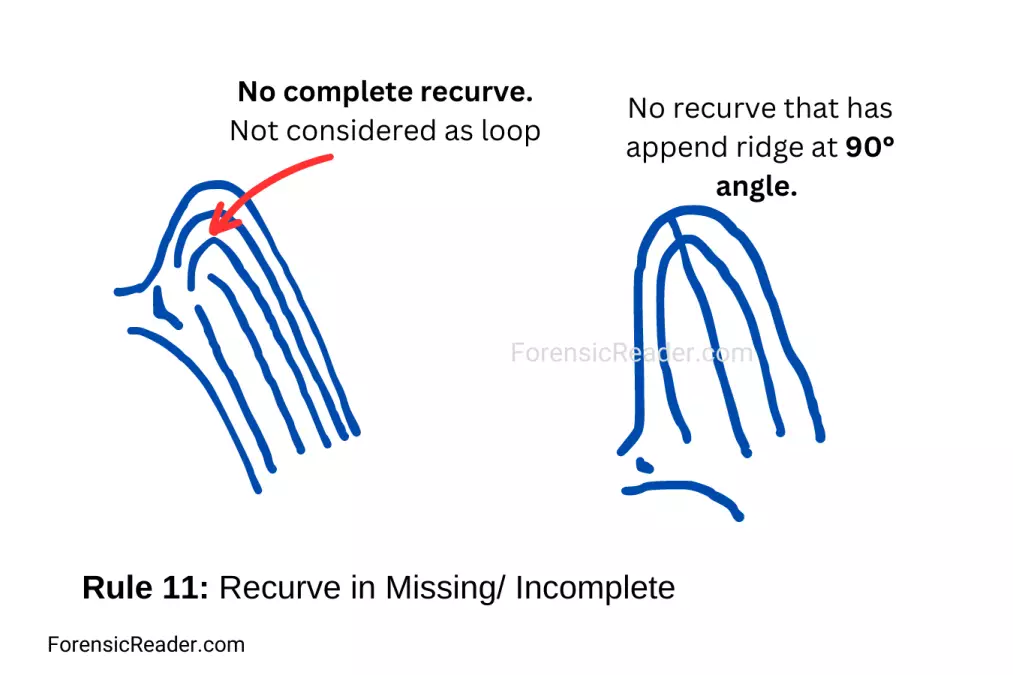
- Left Image, there is no complete recurve
- Right Image, there is a case of spoil recurve with no additional recurve.
In the above two images, there is no complete recurve. In this case, these patterns are categorized as tented arches.
7 Rules For Choosing and Identifying Delta in Loop Fingerprint Pattern
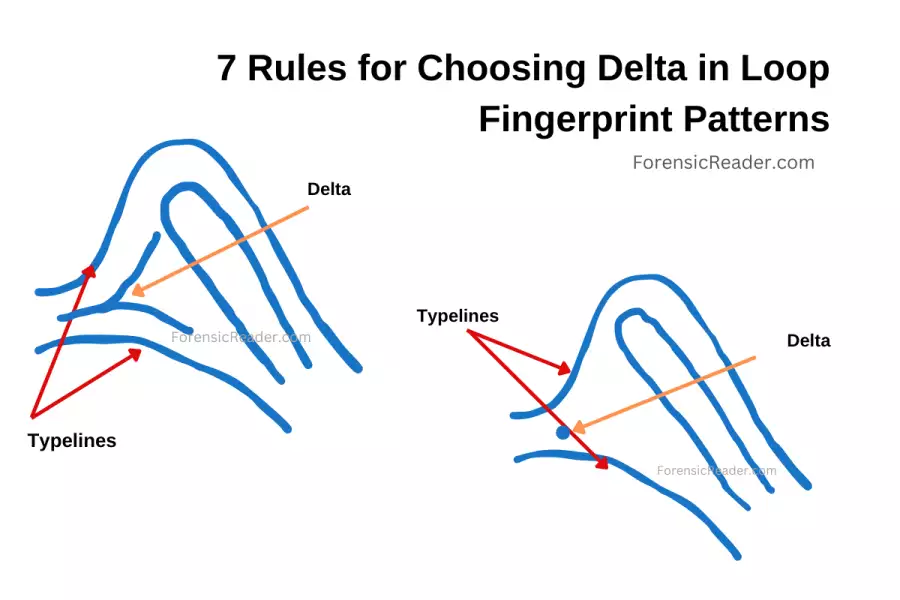
After identifying the core of a loop fingerprint pattern, the next step is to locate its delta.
By definition, a delta is a triangular area at the edges of a fingerprint governed by the divergence of type lines. Delta is not on the ridge itself but at a point nearest to the divergent type lines.
In loops, there is only one delta. And based on the rules that you need to follow to mark a region in the fingerprint as its delta.
Now, let’s have a look at all the guidelines and rules for choosing a delta in a loop fingerprint pattern.
Rule 1: Delta Must be Inside the Type Line of Loop Fingerprints
Typelines are the region of fingerprint that incorporates both core and delta between the utmost possible ridge.
For loops, type lines are the two innermost ridges that start parallel, diverge, recurve, and surround the core and delta.
By looking at a type line fingerprint pattern, the approx area of interest—that defines pattern type—can be interpreted. Here is a classic example of a type line incorporating a delta.
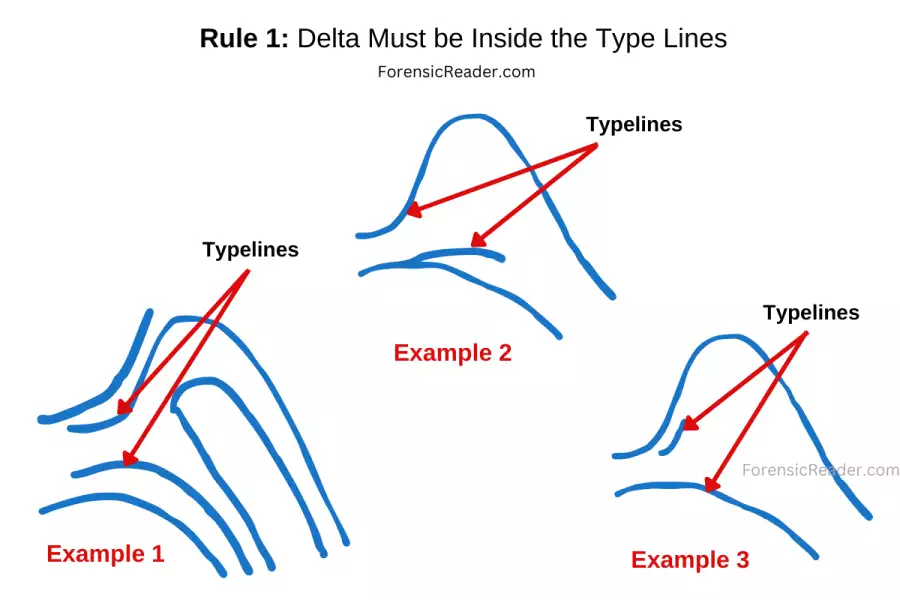
In the 2nd example, there is another line touching (making a fork) the longer ridge. Here, the two innermost ridges are selected as the type lines.
In the 3rd example, there is a short ridge but it starts parallel. In that case, this short ridge is considered as the upper type line while lower remains the the same.
Rule 2: A Delta may be Bifurcation in Loops

In case the loop pattern has a bifurcated ridge that makes a triangular pattern, it can be called a delta. However, there is one more requirement i.e. the bifurcated ridges must open towards the core.
In other words, bifurcated ridges resemble ‘Y’ so the delta rests between the two arms of the letter ‘Y’ (not to the meeting point but to the closest area).
Rule 3: Choosing Delta in Multi-Ridge Bifurcation

Now, let’s assume there is another bifurcation to the earlier bifurcated ridge. In that case, you have to choose the nearest bifurcation fork to the core. So, the delta is placed at a bifurcation that has a close distance to the core.
Rule 4: Delta May be an Abrupt Ending Ridge
If the type line has an abrupt ending ridge to the triangular ridged area and also in front of divergence, then it can be considered as the point of the delta.
How to choose which end of the ridge ends qualify for delta? Ridge endings that are close to the core qualify as delta.

Rule 5: Delta of a Loop Pattern Maybe a Dot
If the type line has a dot and no other ridge rod (short ridge) is present in between the core. The dot can be considered as the delta of that loop pattern.
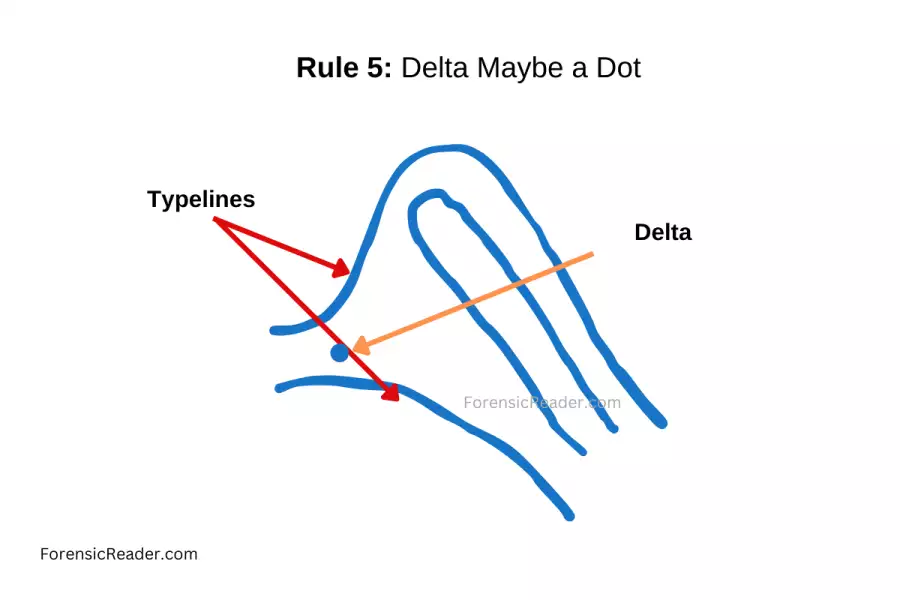
Rule 6: Choosing Among Dot, Abrupt Ending Ridges, and Bifurcation
If the type lines have two or more ridge patterns such as dot, abrupt ending ridges, or bifurcation, the delta is chosen based on (i) the ridge that is nearest to the core and (ii) also in front of the divergence of the type line.
For example:
- A Ridge ending and Dot (Left Image): As the ridge ending is closest to the core, it is chosen over the dot as a delta.
- A Dot and Bifurcation (Right Image): As the bifurcated ridge is closest and open to the core, it qualifies as a delta.
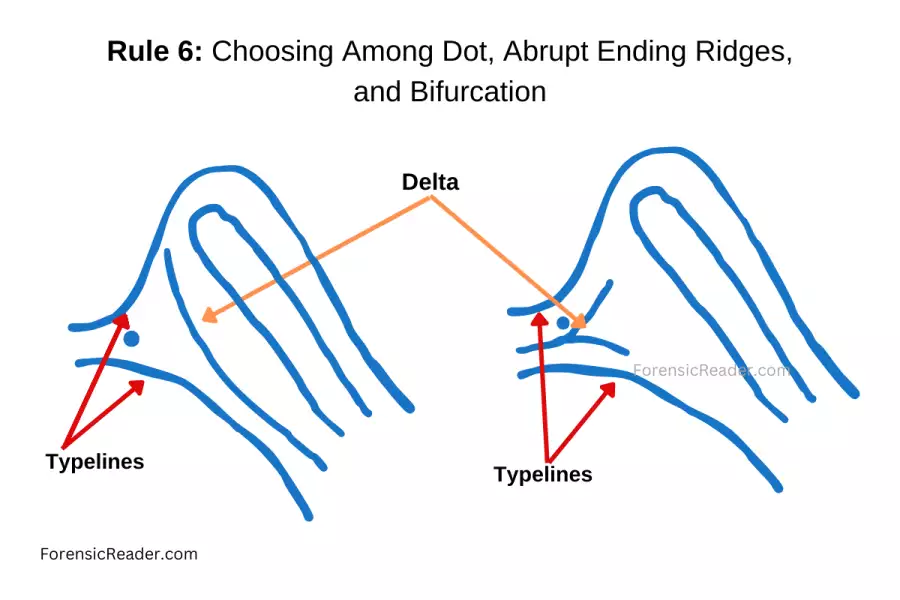
Rule 7: Ridge Rod that does Not begin Before Divergence (or in front)
If the ridge ending (ridge rod) is only aligned to one side of the diverge ridge of type line and doesn’t present in front of it, the point close to the triangular region is qualified as delta.
In the given example, there is a case of a short ridge (ridge rod). Here, the ridge ending that is close to the triangular area of the type line (from where the ridges are diverse) is chosen to be delta.
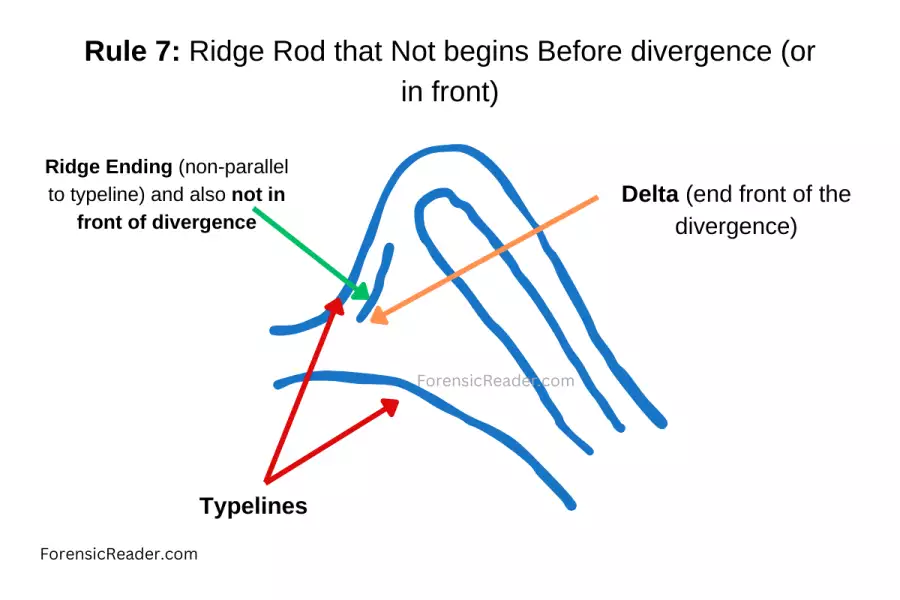
References:
- Fundamentals of Fingerprint Analysis by Hillary Moses Daluz. 2014.
- Advances in Fingerprint Technology by Ashim K. Datta, Henry C. Lee, Robert Ramotowski. 2001.
- Fingerprint Development Techniques: Theory and Application by Stephen M. Bleay, Ruth S. Croxton, Marcel De Puit. 2018.
- Fingerprints and Other Ridge Skin Impressions by Christophe Champod, Chris J. Lennard, Pierre Margot. 2017.
- Fingerprint pattern classification
- Kawagoe, M., & Tojo, A. (1984). Fingerprint pattern classification. Pattern recognition, 17(3), 295-303. [DOI]
- Wiesner, I., Wiesnerova, D., & Tejklova, E. (2001). Effect of anchor and core sequence in microsatellite primers on flax fingerprinting patterns. The Journal of Agricultural Science, 137(1), 37-44. [DOI]
- Moayer, B., & Fu, K. S. (1975). A syntactic approach to fingerprint pattern recognition. Pattern recognition, 7(1-2), 1-23. [DOI]

FR Author Group at ForensicReader is a team of Forensic experts and scholars having B.Sc, M.Sc, or Doctorate( Ph.D.) degrees in Forensic Science. We published on topics on fingerprints, questioned documents, forensic medicine, toxicology, physical evidence, and related case studies. Know More.
